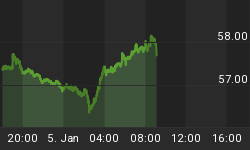One of the key objectives for OPEC is to bring down inventories, a goal that has been elusive this year. But if the oil futures curve is anything to go by, the oil market is showing signs of tightening.
Brent futures have recently begun to exhibit a state of backwardation, which is when near-term oil futures trade at a premium to contracts dated further off into the future. This is the first time in years that backwardation has occurred, and most analysts are taking it as a sign that the oil market finally could be getting closer to rebalancing. In the past, backwardations have accompanied a rebound in the oil market after a bust, while a contango (the opposite of backwardation) tends to occur when the market crashes because of a supply glut.
There are several reasons why backwardation is bullish, which has been discussed in previous articles. A declining futures curve makes it uneconomical to store oil, so backwardation could accelerate the drawdown in inventories. It also complicates the hedging strategies of shale producers, which could hold back expansion plans. It also is a symptom of tightening near-term supplies, although, to be sure, the flip side of that argument is that it could merely be a reflection of expectations that the supply glut will reemerge at some point in the future.
Still, backwardation is occurring at a time when there are other bullish indicators starting to crop up. The U.S. has seen a sharp drawdown in inventories in recent months, down more than 60 million barrels since March. The IEA and OPEC both recently upgraded their oil demand estimates. "World economic growth has gained momentum," OPEC said. "With the ongoing growth momentum and an expected continued dynamic in second-half 2017, there is still some room to the upside."
Related: Oil Futures Point To Higher Oil Prices
The view of Wall Street is also becoming more bullish. Hedge funds and other money managers have amassed a large number of long positions on recent weeks. For the week ending on August 8, investors stepped up their bullish bets on Brent by the equivalent of 58 million barrels, according to the FT, which was the largest weekly increase towards net length since December.
“It’s hard to be aggressively negative if every week you’re getting stronger numbers,” Paul Horsnell, global head of commodities research at Standard Chartered, told the FT, although he added that “there is still resistance. The market is not willing to push prices too far up.”
Indeed, there is little prospect of oil prices moving much beyond $50 per barrel. Not everyone is even sold on the notion that the market is tightening. OPEC production is at its highest point so far in 2017, U.S. shale continues to rise, and some long-planned projects are coming online later this year in Canada and Brazil, for example. “There is no way this oil can be accommodated into the market so prices are going to have to give at some point,” Mr Dei-Michei of JBC Energy told the FT. “This bullish sentiment cannot last.”
In fact, swings in sentiment, like a pendulum, are typical. More than once this year, the bullish positions have built up too far, only to be undone when sentiment shifted, causing a steep selloff in oil prices. Following the price crash in June, the profoundly bearish positioning amongst hedge funds and other money managers also went too far, causing shorts to be liquidated and bullish bets to remerge – which, again, accompanied a rebound in prices.
Related: This $65 Billion Oil Opportunity Will Never Be Tapped
All of that is to say that the most recent shift towards long bets on oil futures probably can’t carry oil prices all that far. The underlying fundamentals simply don’t justify significant price gains…at least for now. “They’re going to have to dig in for the long haul,” Neil Atkinson, head of the IEA’s oil markets and industry division, said on Bloomberg TV, referring to the OPEC cuts. “Re-balancing is a stubborn process.”
In short, the shift into backwardation in the futures market suggests that the supply balance is heading in the right direction, and it probably puts a floor beneath prices for the time being. But it doesn’t necessarily mean that oil be heading much higher than $50 per barrel anytime soon.
By Nick Cunningham of Oilprice.com
More Top Reads From Oilprice.com:















